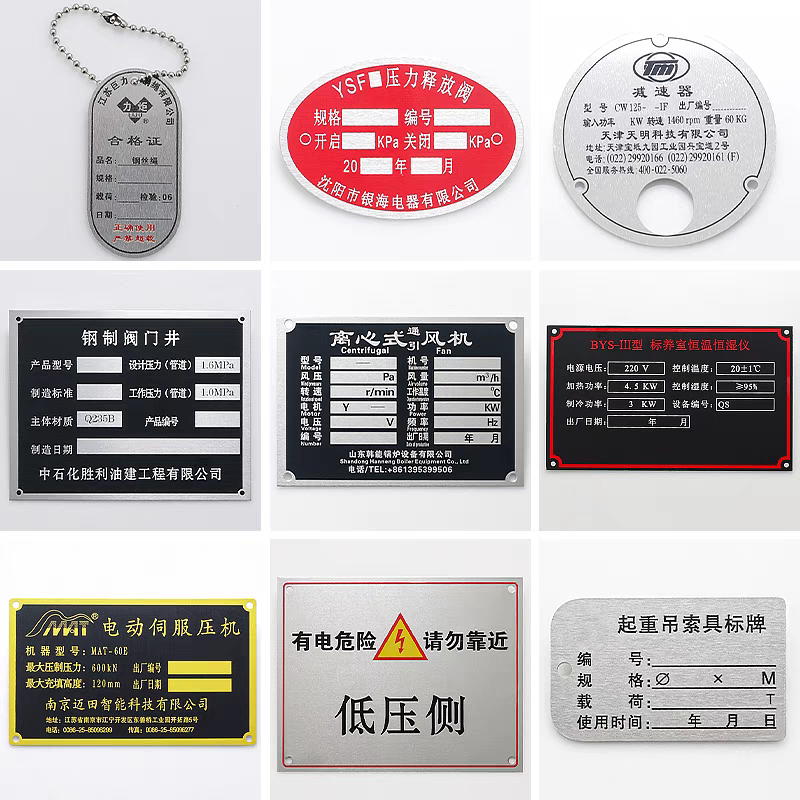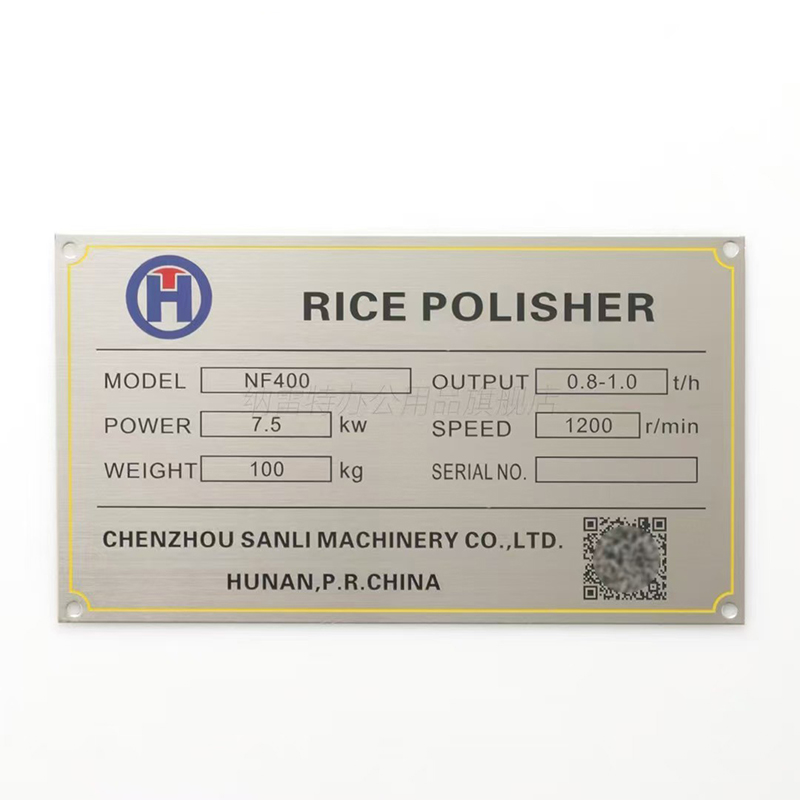In the complex world of industrial safety, laboratory research, and manufacturing, few things are as universally recognized yet frequently misunderstood as hazardous chemicals labels. These small, information-dense placards are the first and often most critical line of defense against accidents, injuries, and environmental damage. They are not merely stickers or regulatory formalities; they are a sophisticated communication system designed to convey life-saving information in seconds. For anyone working with or around chemical substances—from a seasoned researcher to a warehouse forklift operator—understanding these labels is non-negotiable. This comprehensive guide dives deep into seven essential aspects of hazardous chemicals labels, explaining their components, legal importance, and practical role in creating a culture of safety. By mastering this knowledge, you empower yourself and your team to handle dangerous materials with the respect and caution they demand.

What Are Hazardous Chemicals Labels? The Foundation of Safety Communication
At its core, a hazardous chemicals label is a standardized visual tool affixed to containers of chemical substances. Its primary purpose is to immediately alert anyone in the vicinity to the potential dangers contained within. Think of it as a "quick-start guide" to chemical safety. Before reading a lengthy Safety Data Sheet (SDS), the label provides the condensed, crucial information needed for safe handling in the moment.
A basic hazardous chemicals label typically includes:
The product identifier (e.g., "Sulfuric Acid, 98%").
A signal word ("Danger" or "Warning") that indicates the severity of the hazard.
Hazard pictograms: symbols within a red diamond that represent the type of danger (e.g., a flame for flammability, a skull and crossbones for acute toxicity).
Hazard statements: standardized phrases describing the nature of the hazard (e.g., "Causes severe skin burns and eye damage").
Precautionary statements: recommended measures to minimize or prevent adverse effects from exposure (e.g., "Wear protective gloves/protective clothing/eye protection/face protection").
Supplier information, including the name, address, and telephone number.
These elements work in concert to create a snapshot of the risk profile, making hazardous chemicals labels an indispensable tool for daily safety protocols.
The Globally Harmonized System (GHS): Standardizing Hazardous Chemicals Labels Worldwide
Before the adoption of the Globally Harmonized System of Classification and Labelling of Chemicals (GHS), the world was a patchwork of different national and regional labeling standards. A chemical might have one set of symbols in Europe, another in the United States, and a completely different one in Asia. This created confusion, increased the risk of errors during international transport, and posed significant challenges for multinational corporations.
The GHS, developed by the United Nations, revolutionized this landscape. Its goal was to "harmonize" the classification and labeling of chemicals across the globe. For hazardous chemicals labels, this meant the implementation of a universal set of:
Classification Criteria: Scientifically based rules to determine what hazards a chemical presents.
Hazard Pictograms: Nine standardized symbols that are universally understood, transcending language barriers.
Standardized Phrases: Consistent hazard and precautionary statements.
The adoption of GHS means that a worker in Japan, Brazil, or Canada can immediately recognize the hazards of a chemical produced in Germany, thanks to the consistent format of the hazardous chemicals labels. This global standardization has dramatically improved safety for international trade, transport, and workplace handling.
Decoding the 9 GHS Pictograms: The Visual Language of Danger
The most visually striking elements on any modern hazardous chemicals labels are the pictograms. These nine symbols, each enclosed in a red square set on a point (a diamond), provide an instant, intuitive understanding of the primary hazards. They are the alphabet of the GHS visual language.
Flame (Physical Hazard): Denotes flammable materials, including gases, aerosols, liquids, and solids. It also signifies self-reactive substances and organic peroxides.
Flame Over Circle (Oxidizers): Identifies oxidizing gases, liquids, and solids that can cause or intensify a fire by providing oxygen.
Skull and Crossbones (Acute Toxicity): A severe warning for chemicals that are toxic or fatal even in small amounts through ingestion, inhalation, or skin contact.
Corrosion (Corrosive Damage): Warns of materials that can cause severe skin burns and eye damage, and can be corrosive to metals.
Exploding Bomb (Explosives): Indicates unstable explosives, self-reactive substances, and organic peroxides that may explode.
Health Hazard (Chronic Health Hazards): Represents a range of long-term health risks, including carcinogenicity, respiratory sensitization, reproductive toxicity, organ toxicity, and mutagenicity.
Exclamation Mark (Less Severe Health Hazards): Signifies hazards such as skin or eye irritation, skin sensitization, acute toxicity (harmful, not fatal), and narcotic effects.
Environment (Aquatic Toxicity): (Non-mandatory in the U.S. but used in other regions) Warns of chemicals that are toxic to aquatic life, with long-lasting effects.
Gas Cylinder (Gases Under Pressure): Identifies gases stored under pressure, which may explode if heated, or refrigerated gases that can cause cryogenic burns.
Understanding these pictograms is fundamental to correctly interpreting any hazardous chemicals labels and responding appropriately to the risks they signify.

The Legal Imperative: Why Compliance with Hazardous Chemicals Labeling is Not Optional
Proper hazardous chemicals labeling is not just a best practice; it is a legal requirement enforced by government agencies across the globe. In the United States, the Occupational Safety and Health Administration (OSHA) mandates compliance with its Hazard Communication Standard (HCS), which is fully aligned with the GHS. Similar regulations exist in the European Union (REACH/CLP), Canada (WHMIS), and many other countries.
Failure to comply can result in severe consequences:
Hefty Fines: Regulatory bodies can issue significant financial penalties for violations, including unlabeled containers, improperly formatted labels, or a failure to train employees on label comprehension.
Criminal Liability: In cases of severe negligence leading to injury or death, company executives and supervisors can face criminal charges.
Civil Lawsuits: Companies can be sued for damages in civil court, where non-compliant hazardous chemicals labels can be presented as conclusive evidence of negligence.
Workplace Shutdowns: Regulatory inspectors have the authority to issue stop-work orders or shut down entire facilities until serious violations are corrected.
Beyond avoiding penalties, compliance demonstrates a company's commitment to its most valuable asset: its employees. A robust labeling program is the cornerstone of a legally defensible and ethically sound safety culture.
Beyond the Container: The Role of Hazardous Chemicals Labels in the Entire Safety Ecosystem
The utility of hazardous chemicals labels extends far beyond the immediate container they are stuck on. They are a vital component integrated into a broader safety management system.
Linking to Safety Data Sheets (SDS): The product identifier on the label is the direct link to the corresponding Safety Data Sheet. The SDS provides exhaustive details about the chemical's properties, hazards, and emergency response measures. The label gives the immediate "what," and the SDS provides the comprehensive "why" and "how."
Risk Assessment and Workplace Planning: By reading the labels on all chemicals in a work area, safety managers can perform thorough risk assessments. They can identify incompatible materials that need to be stored separately (e.g., oxidizers away from flammables) and determine the need for specific engineering controls or personal protective equipment (PPE).
Emergency Response: In the event of a spill, fire, or exposure, firefighters, hazmat teams, and other first responders rely heavily on hazardous chemicals labels to make split-second decisions. The pictograms and hazard statements instantly inform them of the dangers present and the appropriate initial response actions.
Training and Empowerment: Effective employee training must center on how to read and understand hazardous chemicals labels. When workers are literate in this language, they become active participants in their own safety, capable of identifying hazards and taking the correct precautions without constant supervision.
Best Practices for Implementing and Maintaining Effective Hazardous Chemicals Labels
Simply having labels is not enough; they must be effective. A faded, damaged, or incorrect label is as dangerous as having no label at all. Here are key best practices for managing hazardous chemicals labels:
Ensure Durability and Legibility: Labels must be made from materials that can withstand the environment (e.g., chemical splashes, moisture, UV exposure). Print must be clear and resistant to fading.
Never Remove or Deface Labels: This should be a zero-tolerance policy in any facility. Any employee transferring a chemical to a secondary container must immediately label that new container with all required information.
Implement a Regular Inspection Schedule: Designate personnel to routinely inspect all chemical containers to ensure labels are present, legible, and securely attached. This is often part of a broader chemical hygiene or safety audit.
Train, Train, and Re-Train: All employees who handle or work near chemicals must receive initial and annual refresher training on the GHS system and how to interpret hazardous chemicals labels. Training should include practical, hands-on exercises.
Address Secondary Containers: A common failure point is the unlabeled secondary container (e.g., a spray bottle, beaker, or jug). Strict procedures must require that these containers are labeled with at least the product identifier and primary hazards immediately upon transfer.
The Future of Hazardous Chemicals Labels: Digitalization and Smart Technology
The world of hazardous chemicals labels is on the cusp of a technological revolution. While the physical, standardized label will remain essential, it is increasingly being augmented by digital and smart technologies.
QR Codes and RFID Tags: Many companies are now adding QR codes or RFID (Radio-Frequency Identification) tags to their labels. By scanning the code with a smartphone, a worker can instantly pull up the full SDS, view instructional videos, or access emergency contact information.
Augmented Reality (AR): Future hazardous chemicals labels could be scanned by an AR headset, which would then overlay digital information—such as handling instructions or real-time ventilation status—onto the user's field of view.
Sensor Integration: "Smart labels" with integrated sensors could change color or display a warning signal if the chemical inside is degrading, becoming unstable, or if a leak is detected. This provides a proactive warning beyond the static information of a traditional label.
These advancements promise to make hazardous chemicals labels even more interactive, informative, and integrated into a connected safety ecosystem, further reducing risk and enhancing workplace safety.
Hazardous chemicals labels are far more than a regulatory checkbox. They are a dynamic, intelligent, and legally mandated system that forms the bedrock of chemical safety. From the globally understood pictograms to the critical link with SDS, and from legal compliance to the exciting potential of smart technology, every aspect of these labels is designed to protect human health and the environment. By investing in comprehensive labeling systems and thorough employee training, organizations do more than just follow the law—they build a resilient, informed, and proactive culture of safety where every employee is equipped to go home safely at the end of the day. Ignoring the critical lessons embedded in these labels is a risk that no individual or organization can afford to take.






